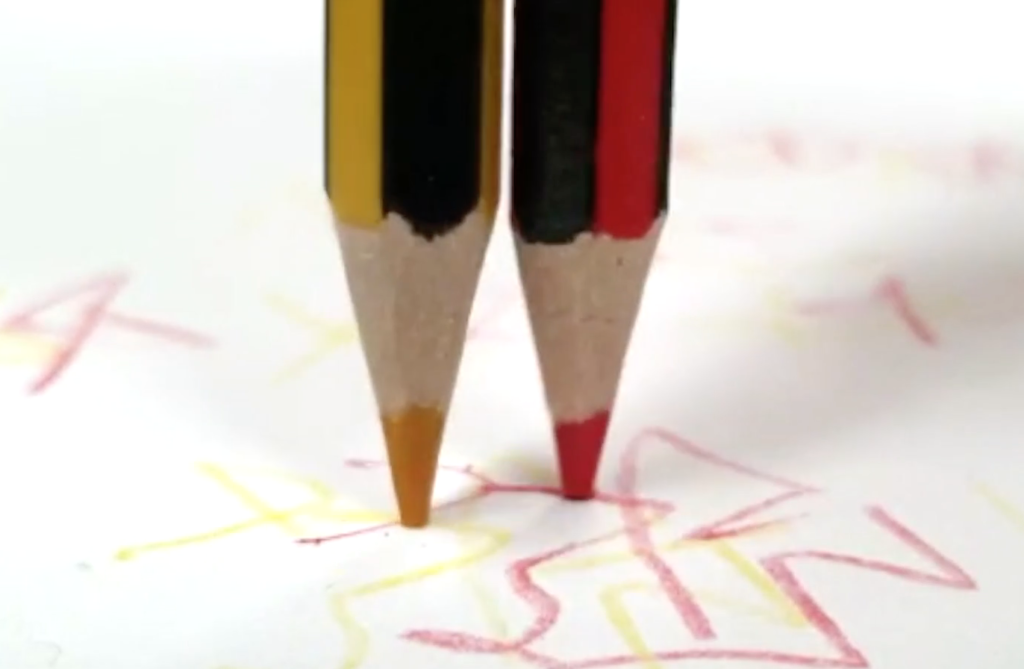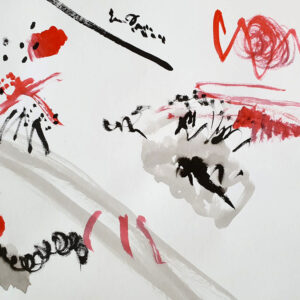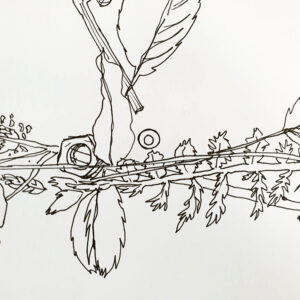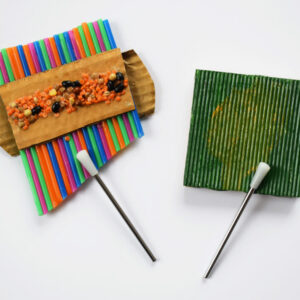Mark Making & Sound: Part Two
Mark making underpins all drawing activity. In Part Two of Mark Making and Sound we explore how we might capture the spirit of a piece of music through abstract mark making.
This resource is the second of three resources which explore how we can use sound to inspire mark making.
The aim of this exercise is to enable learners to develop mark making skills without the pressure of trying to make a drawing which “looks like” something else. This activity aims to enable learners to make the link between the marks they make, how they feel when they make them, and how others ‘read’ those marks.
How we can use sound to inspire personality into our mark making? What kinds of marks will we make, inspired by the music we hear?
This resource can be used with ages 6 through to adults and takes between 5 minutes and 15 minutes.
A more open or able learner might be able to begin to capture the spirit of the music through visual marks. People “reading” the drawing might be able to directly reference elements within the musical piece.
Please use this exercise in context of the other Mark Making and Sound exercises here. The text explanations on the other resources in this series apply to this resource too.
Even very young children understand that we enjoy listening to music because of the variety of rhythms, melodies and instruments within the piece. Likewise, they can make their own drawings more interesting by using a variety of marks, but we need to enable children to experience for themselves that they can invent their own mark making language.
In this exercise we will use music to inspire mark making. In particular, we explore how the spirit of the music affects the pressure, speed and movement of our hand/mark making.
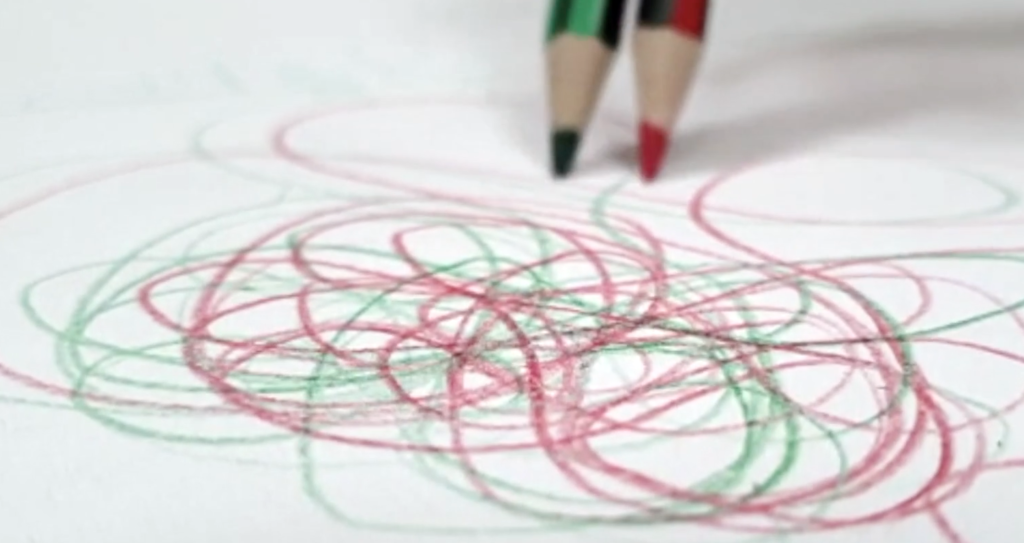
This exercise can be used as a transitional exercise between activities or to precede other drawing activities. It’s an ideal exercise to do as a guided activity, i.e. with the teacher using verbal prompts and sounds to help the children.
Note to Teachers:
Please do try this exercise yourself a few times so you know how it feels to actually do the exercise before you run through it with pupils.
Watch the video above as a class so that the children can begin to appreciate some of the different ways that they can use their drawing tool, inspired by the sound.
You can then either use just the audio from the video so the children can create their own marks (it is important that they don’t feel the need to replicate the marks in the video), or you might choose your own music.
There is also lots of scope for pupils to compose their own music, or make their own musical choices, to help increase ownership and increase diversity of mark making.
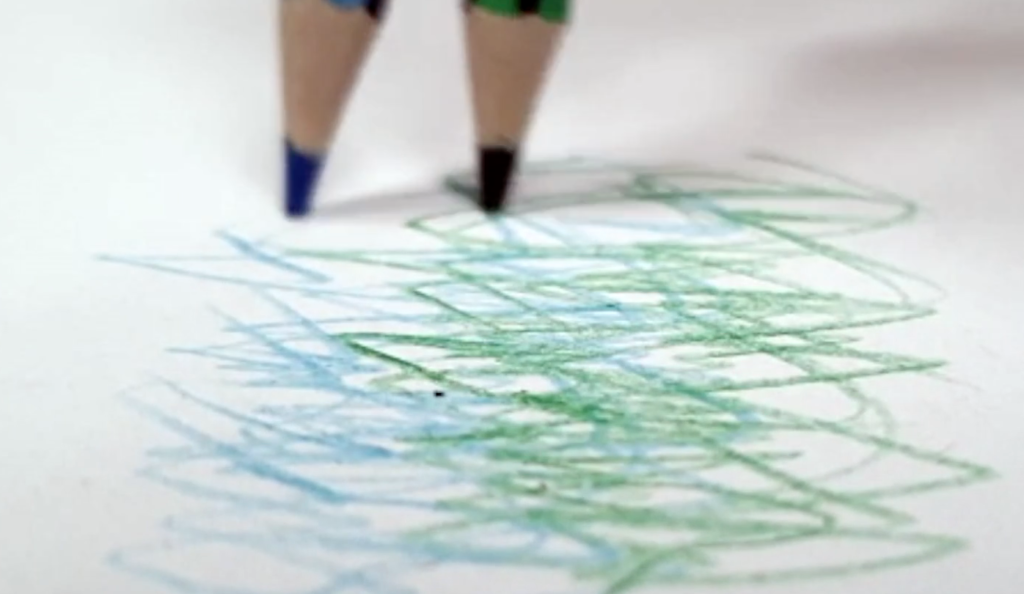
Without a visual subject matter ( i.e. you are not drawing anything in particular), you will be making marks using your drawing tool, inspired by the sounds you hear.
It’s really important to try and work intuitively and without overthinking what you are doing. This can take a little bit of practice and it can also take a little bit of time to settle into the session. At first the saboteur voice inside your head might be telling you:
- I’m not doing it right
- this is silly
- I don’t know what to do
- I’m pretending…
Try to ignore this voice. Acknowledge its presence, but politely tell the voice to shush. The more you are able to relax into the activity and stop resisting the more you will get out of the exercise.
Always remember there is no right or wrong way of drawing in this exercise, only an “expanding” of what is being experienced.
To Start
Take a sheet of A3 or A2 cartridge paper, and a drawing tool: a soft pencil (2B, 4B, 6B) or a handwriting pen, or ink and brush etc.
As you listen to the music, challenge yourself to make a variety of marks in response. To help push the diversity of marks you make, think about how you:
- Hold the drawing tool. For example, holding it firmly near the drawing end will give you a different result to holding it lightly at the other end. Be experimental!
- Experiment with pressure applied
- Experiment with speed of movement
- Experiment with how you move your fingers, wrist, elbow or shoulder.
Varying each of these in different combinations will help you make a more diverse set of marks.
Feel the energy of the sound, and let the same kind of energy travel down your arm to drawing tool!
Tip:
If you feel like you’re really struggling to let go and you can’t stop that voice inside your head saying “I don’t know what I’m doing”, then try closing your eyes as you listen to the sounds and make the marks with your eyes closed.
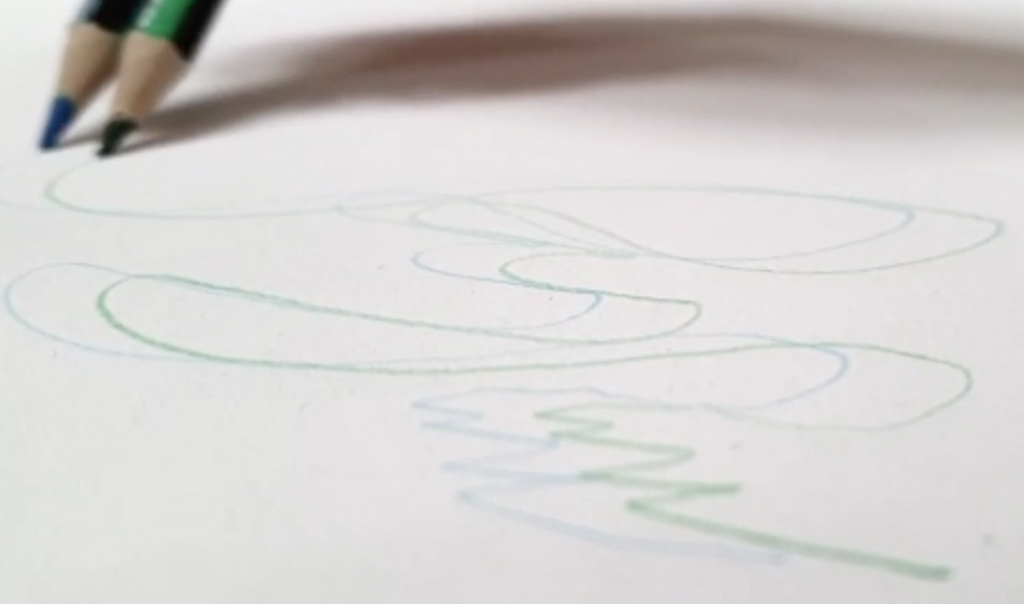
Reflection
Once you have tried the exercise you may like to ask the following questions to help you reflect upon the experience:
- Which marks do I like?
- Which marks are unexpected/ have I never made before?
- When I look at the marks can I hear the sound that inspired me to make them?
- Can I see that my marks have character or personality? Do they convey emotion for example anger or care?

